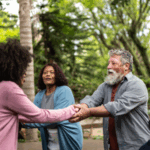Can the Sri Lankan people rise from the ashes of war?
The dire situation of people living in north Sri Lanka and atrocities committed two years ago gained attention last month when a war crimes case was filed against the Sri Lankan president and media reports named the Sri Lankan high commissioner to Australia as a possible prosecution target.
The International Commission of Jurists prepared a submission to the Federal Police, setting out a case for Australia to investigate war crimes, including the shelling of Tamil soldiers and civilians trapped in what had been declared a safe zone at the end of the civil war in 2009.
The Sri Lankan navy had then blocked attempts by the International Committee of the Red Cross to evacuate the injured, women and children from a safe zone.
Admiral Thisara Samarasinghe, then chief of staff of the Sri Lankan navy and now Sri Lankan high commissioner, denied the allegations.
Government forces declared victory over the rebel Liberation Tigers of Tamil Eelam (LTTE) in May 2009 after a conflict that had raged on and off for nearly three decades and killed thousands of people. The conflict ended with large numbers of Sri Lankans living as internally displaced persons (IDPs), especially in the north of the country.
Bruce Haigh, a political commentator and retired diplomat who served in Sri Lanka, said there were now emerging credible claims of rape and other abuse by members of the occupying forces against Tamil women and those old people and children that remained who were seeking to eke out a living with what few assets they had left.
A United Nations report released in April this year found up to 40,000 civilians were killed in the final weeks of the war and accused both sides of war crimes.
“Hospitals, UN centres and Red Cross ships were deliberately shelled by government forces, prisoners shot in the head and women raped, while LTTE leaders used 330,000 civilians as a human shield,” the report pointed out.
After a ten-month investigation, it concluded that “most civilian casualties in the final phases of the war were caused by government shelling.”
In addition to holding civilians as human shields, the rebels were accused of using child soldiers and killing people who tried to leave areas under their control.
UN Secretary-General Ban Ki-moon sent the report to the United Nations human rights chief and the President of the Human Rights Council.
War crimes were also revealed in a videos obtained by Britain’s Channel 4 purporting to show the extra-judicial killing of what were thought to be Tamil rebels. Sri Lanka’s army spokesman rejected as fabrications the videos and pictures showing bloodstained and blindfolded bodies.
The UN said independent experts concluded the footage was authentic and international human rights groups said a comprehensive and independent war crimes inquiry was needed, but the government said that the military inflicted no civilian deaths during the final stages of its victory.
When the UN report was released, Ruki Fernando, coordinator of a group of about two dozen clergy and lay people calling themselves “concerned Christians” in Sri Lanka, said, “We are relieved that finally the report has been made public (internationally). But the response (to the report) here is shocking and disappointing.”
Retired Anglican bishop Kumara Illangasinge, one of the signatories to the statement, said, “Finally, there is a credible report on the war of which many Sri Lankans were not aware.
“We need reconciliation and it should be built on truth.”
In 2010 and again this year, UnitingWorld’s John Barr travelled into the region where many of the atrocities were alleged to have taken place.
“I witnessed horrendous injuries,” he said.
“Women continue to be vulnerable as so many men, husbands, brothers and sons, have been killed, are missing or remain in detention. Children are traumatised. Much of the land is still mined or occupied by the military. The local Tamil community have been humiliated and there is little hope for the future.”
The Uniting Church in Australia is engaged with the Jaffna Diocese Church of South India and the Methodist Church Sri Lanka. Both these churches are working with the victims of this terrible violence.
They are supporting medical, trauma and education programs. Our partners are offering care and encouragement as Sri Lanka’s Tamil community tries to deal with the situation.
Mr Barr said real hope for the future could only come when injustices are recognised. “Authentic healing can only take place when the hurts are addressed and the crimes are dealt with. Only then can Sri Lanka move forward.”
Stephen Webb
Migration, religion, trade and political control
As far as we know, the earliest inhabitants of this beautiful island were the aboriginal Vaddas (Vedhes) people.
It has been suggested that the “descendents of Eve” came out of north-eastern Africa as far back as 82,000 years ago.
During an ice age, some made their sea crossings in waves of migration. They followed the coast around what is now India and eventually made the sea crossings to south-east Asia and Australia.
Very few of these original people remain in Sri Lanka due to intermarriage with the later immigrants, who mostly came from southern India.
Among these new arrivals were people of Aryan descent, members of Sinhalas (the Lion Tribe). They named their new home Sinhaladvipa.
They are now known as the Sinhalese, who make up the majority of the population of Sri Lanka.
Asoka, third Emperor of the Indian Mauryan Empire, was converted to Buddhism and set about a program of moral, spiritual and social renewal. In the third century BC the King of Ceylon received Asoka’s emissaries with great respect and was impressed by the new faith. This visit marks the beginning of Sinhalese culture and “the phenomenal rise of Buddhism” throughout the country.
In an era of tolerance, Hindu gods were recognised and statues included in newly constructed Buddhist temples.
Before the arrival of European traders, there was a complex system of sea and overland trade within Asia, extending as far as the Roman Empire. The sea ports were linked through the Malacca Straits and a complex system of commerce encouraged migration and settlement between the Indian sub continent and what is now south-east Asia. This facilitated the spread of Buddhism towards the east.
At school, we learned about Bartholomew Dias and his voyage around the Cape of Good Hope to the Indian Ocean. This opened up a monopoly in sea trade for the Portuguese, a secret which they were able to keep from their European competitors.
The Portuguese established rule over Ceylon until the Dutch, from the Batavia nRepublic, elbowed them out through an alliance with the Sinhalese. British rule was created in 1815 in the era of expansion of the British Empire, until independence in 1948.
The overall result has been a mixture of ideas, beliefs and alliances — a recipe for the disastrous events of recent times.
Our thinking is clouded by our images of saffron-cloaked Buddhist monks, peacefully spinning their prayer wheels and sitting cross-legged as they recite their mantras.
Similarly our perceptions of Hinduism are of followers of Mahatma Gandhi and his commitment to non-violent resistance, while all the time there have been undercurrents of bitterness, intolerance, exploitation and injustice.
One gains the impression that it is not all over yet in Sri Lanka.
John Atkinson













